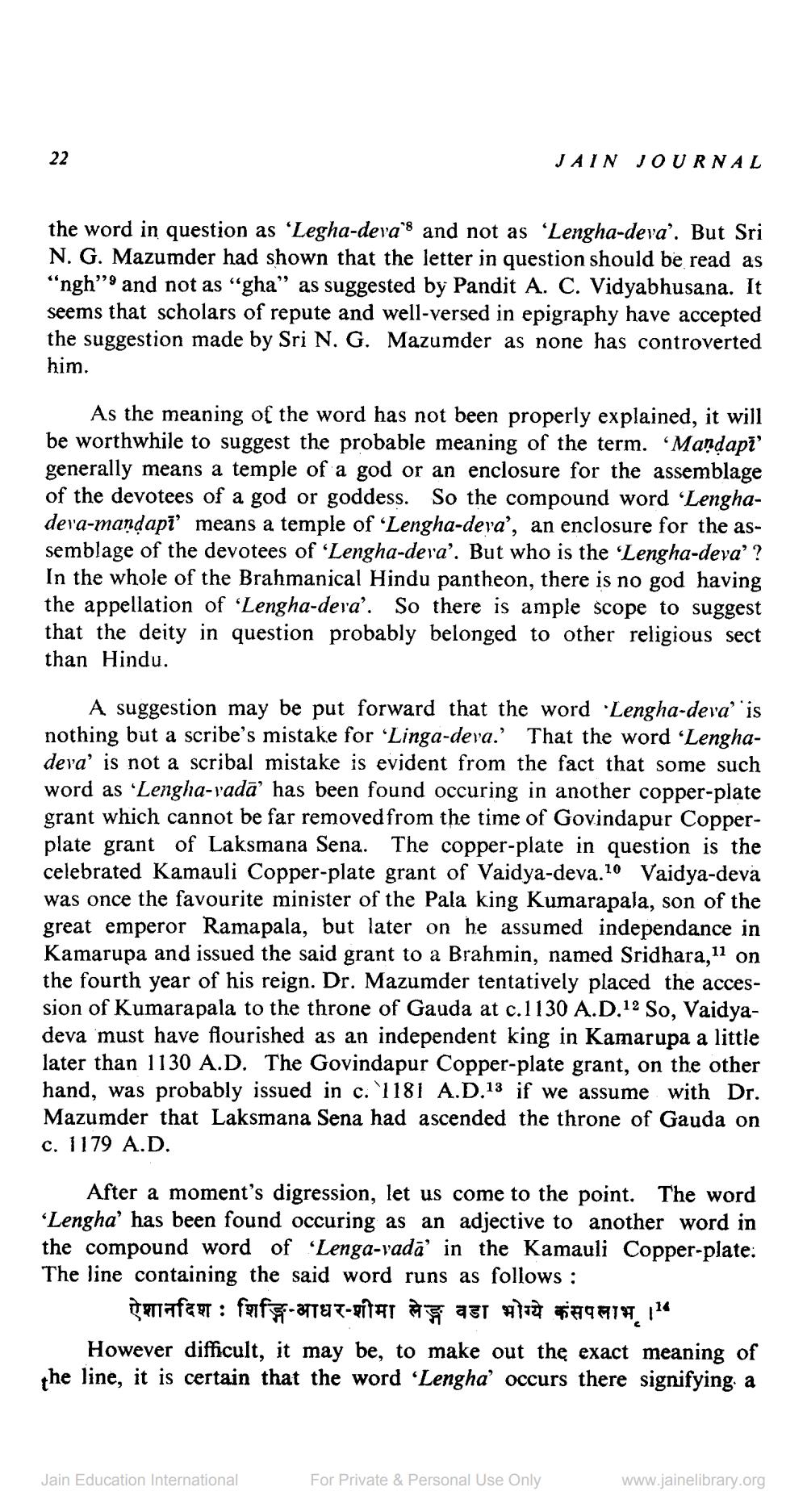________________
22
the word in question as 'Legha-deva's and not as 'Lengha-deva'. But Sri N. G. Mazumder had shown that the letter in question should be read as "ngh" and not as "gha" as suggested by Pandit A. C. Vidyabhusana. It seems that scholars of repute and well-versed in epigraphy have accepted the suggestion made by Sri N. G. Mazumder as none has controverted him.
JAIN JOURNAL
As the meaning of the word has not been properly explained, it will be worthwhile to suggest the probable meaning of the term. 'Maṇḍapi' generally means a temple of a god or an enclosure for the assemblage of the devotees of a god or goddess. So the compound word 'Lenghadeva-maṇḍapi' means a temple of 'Lengha-deva', an enclosure for the assemblage of the devotees of 'Lengha-deva'. But who is the 'Lengha-deva'? In the whole of the Brahmanical Hindu pantheon, there is no god having the appellation of 'Lengha-deva'. So there is ample scope to suggest that the deity in question probably belonged to other religious sect than Hindu.
A suggestion may be put forward that the word 'Lengha-deva' is nothing but a scribe's mistake for 'Linga-deva.' That the word 'Lenghadeva' is not a scribal mistake is evident from the fact that some such word as 'Lengha-vada' has been found occuring in another copper-plate grant which cannot be far removed from the time of Govindapur Copperplate grant of Laksmana Sena. The copper-plate in question is the celebrated Kamauli Copper-plate grant of Vaidya-deva.10 Vaidya-deva was once the favourite minister of the Pala king Kumarapala, son of the great emperor Ramapala, but later on he assumed independance in Kamarupa and issued the said grant to a Brahmin, named Sridhara,11 on the fourth year of his reign. Dr. Mazumder tentatively placed the accession of Kumarapala to the throne of Gauda at c.1130 A.D.12 So, Vaidyadeva must have flourished as an independent king in Kamarupa a little later than 1130 A.D. The Govindapur Copper-plate grant, on the other hand, was probably issued in c. 1181 A.D.13 if we assume with Dr. Mazumder that Laksmana Sena had ascended the throne of Gauda on c. 1179 A.D.
After a moment's digression, let us come to the point. The word 'Lengha' has been found occuring as an adjective to another word in the compound word of 'Lenga-vada' in the Kamauli Copper-plate. The line containing the said word runs as follows:
ऐशानदिश: शिङ्गि - आधर-शीमा लेङ्ग वडा भोग्ये कंसपलाभ |
| 14
However difficult, it may be, to make out the exact meaning of the line, it is certain that the word 'Lengha' occurs there signifying a
Jain Education International
For Private & Personal Use Only
www.jainelibrary.org




